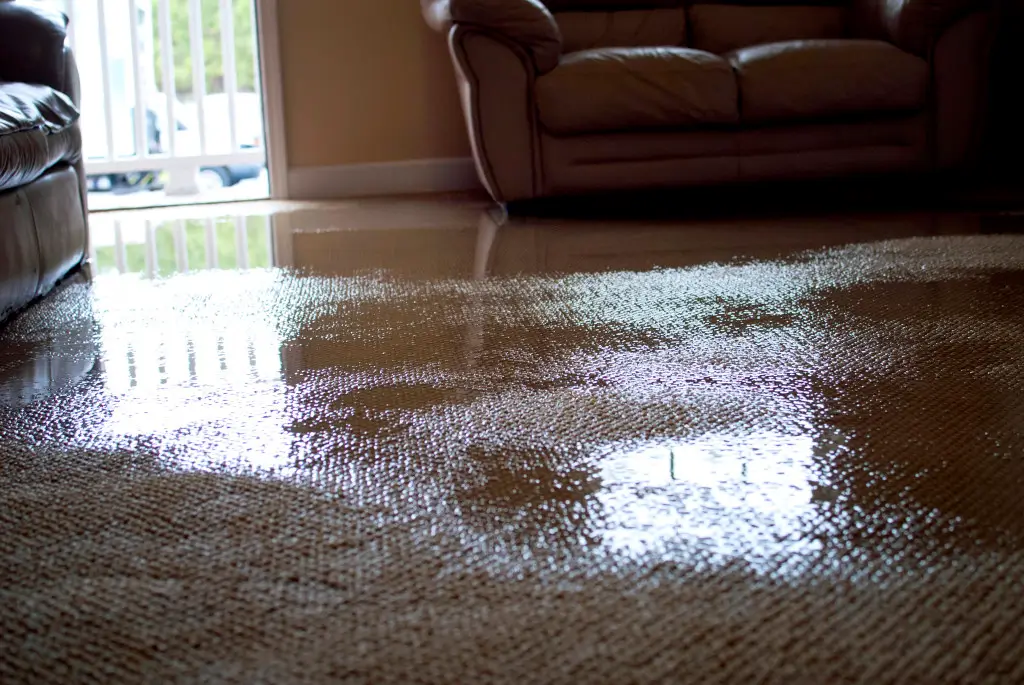
Flood Cleanup: Avoiding Indoor Air Quality Problems
During a flood cleanup, the indoor air quality in your home or office may appear to be the least of your problems. However, failure to remove contaminated materials and to reduce moisture and humidity can present serious long-term health risks. Standing water and wet materials are a breeding ground for microorganisms, such as viruses, bacteria, and mold. They can cause disease, trigger allergic reactions, and continue to damage materials long after the flood. Children are different from adults. They may be more vulnerable to chemicals and organisms they are exposed to in the environment.
Remove Standing Water
Standing water is a breeding ground for microorganisms, which can become airborne and be inhaled. Where floodwater contains sewage or decaying animal carcasses, infectious disease is of concern. Even when flooding is due to rainwater, the growth of microorganisms can cause allergic reactions in sensitive individuals. For these health reasons, and to lessen structural damage, all standing water should be removed as quickly as possible.
Dry Out Your Home
Excess moisture in the home is an indoor air quality concern for three reasons:
- Microorganisms brought into the home during flooding may present a health hazard. These organisms can penetrate deep into soaked, porous materials and later be released into air or water. Coming in contact with air or water that contains these organisms can make you sick.
- High humidity and moist materials provide ideal environments for the excessive growth of microorganisms that are always present in the home. This may result in additional health concerns such as allergic reactions.
- Long-term increases in humidity in the home can also foster the growth of dust mites. Dust mites are a major cause of allergic reactions and asthma.
Be patient. The drying out process could take several weeks, and growth of microorganisms will continue as long as humidity is high. If the house is not dried out properly, a musty odor, signifying growth of microorganisms can remain long after the flood.
Remove Wet Materials
It can be difficult to throw away items in a home, particularly those with sentimental value. However, keeping certain items that were soaked by water may be unhealthy. Some materials tend to absorb and keep water more than others. In general, materials that are wet and cannot be thoroughly cleaned and dried within 24-48 hours should be discarded, as they can remain a source of microbial growth.
In addition, fiberboard, fibrous insulation, and disposable filters should be replaced, if they are present in your heating and air conditioning system and have contacted water. (If a filter was designed to be cleaned with water and was in contact with clean rainwater only, ensure that it is thoroughly cleaned before reinstalling.)
Avoid Problems from the Use of Cleaners and Disinfectants
The cleanup process involves thorough washing and disinfecting of the walls, floors, closets, shelves, and contents of the house. In most cases, common household cleaning products and disinfectants are used for this task. FEMA also suggests the use of disinfectants and sanitizers on the ductwork for the heating and air conditioning system, if it has been flooded.
Disinfectants and sanitizers contain toxic substances. The ability of chemicals in other household products used for cleaning to cause health effects varies greatly, from those with no known health effect to those that are highly toxic. Read and follow label instructions carefully, and provide fresh air by opening windows and doors. If it is safe for you to use electricity and the home is dry, use fans both during and after the use of disinfecting, cleaning, and sanitizing products. Be careful about mixing household cleaners and disinfectants together. Check labels for cautions on this. Mixing certain types of products can produce toxic fumes and result in injury and even death.
If possible, use an all natural cleaner; Absolute Flood Response proudly utilizes Benefect.
Avoid Carbon Monoxide Poisoning
Carbon monoxide (CO) is a colorless, odorless gas that can be lethal at high levels. Carbon monoxide levels can build up rapidly if certain types of combustion devices (for example, gasoline-powered generators, camp stoves and lanterns, or charcoal-burning devices) are used indoors. Do not use combustion devices designed for outdoor use indoors.
Avoid Problems from Airborne Asbestos and Lead Dust
Elevated concentrations of airborne asbestos can occur if asbestos-containing materials present in the home are disturbed. Airborne asbestos can cause lung cancer and mesothelioma, a cancer of the chest and abdominal linings. If you know or suspect that your home contains asbestos, contact the EPA TSCA Assistance Information Service at (202) 554-1404 for information on steps you should take to avoid exposure.
Lead is a highly toxic metal which produces a range of adverse health effects, particularly in young children. Disturbance or removal of materials containing lead-based paint may result in elevated concentration of lead dust in the air. If you know or suspect that your home contains lead-based paint, contact a certified remediation company, such as Absolute Flood Response, for detailed information or questions. Call and speak with a specialist 24/7, Pacific time (except Federal holidays) at (702) 243-5663.
Special thanks to the EPA for this info!
Help in 60 Minutes or Less

We'll Be There to Help
24 Hours a Day
Call Now (702) 243-5663
Awards & Recognition

Absolute Flood Response
is recognized by the Las Vegas
Chamber of Commerce for
"Customer Service Excellence"
Our Promise
Fair Pricing:
There are no hidden costs. Prices are dictated by the standard XACTIMATE pricelist that is determined by the Insurance industry, ensuring that you or your insurance is never overcharged.
Personal Service:
24/7 service by real people. We never use an answering service or foreign call center, which means that Absolute Flood Response is always at the other end, ready to serve you.
Proven Technicians:
Our professional technicians are IICRC-Certified and trained to go along with their existing years of experience and training.
Reliability:
Absolute Flood Response started in 2008 and has since satisfied thousands of customers with our reliable service. Our goal of 100 percent satisfaction shows with our numerous positive online reviews as well as our repeat customers.
Protecting Customers:
Respecting customers and their property is among our top priorities. Your time and property are always treated with respect, appointments are kept promptly and your possessions are handled with care to ensure its safety.
The Right Stuff:
We have seen and dealt with it all, but that doesn't mean that life doesn't throw us all some curveballs. Our dedicated and creative staff mean that a solution can always be custom-created, even if the restoration need is unique. Always done as quickly and thoroughly as possible.
We Are Green:
Absolute Flood Response is a company that believes in environmental care, meaning that we use environmentally-friendly materials, such as Benefect, substances and waste disposal procedures are always followed carefully, because it's the right thing to do.
A Caring Approach:
Honest and true concern for customers by genuine people who care is rare these days, but, it's the way we do business at Absolute Flood Response.